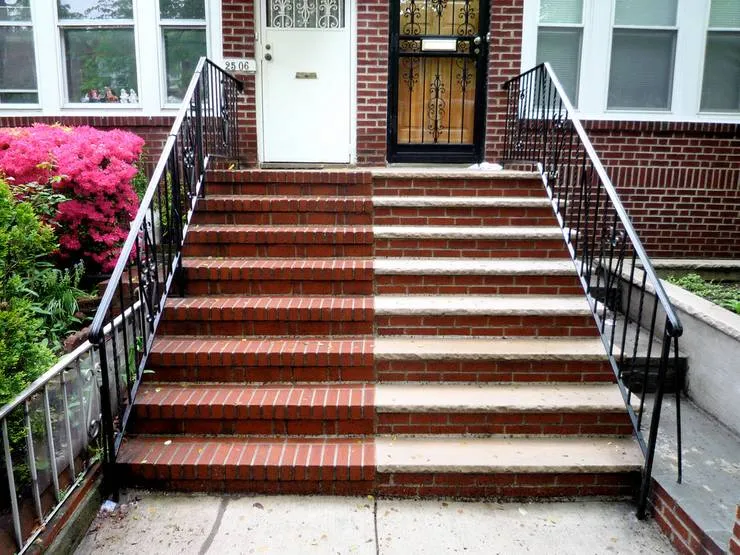Implementing A/B Testing in Only 5 Minutes!
Sammy Teillet4 min read

Have you ever met a coworker or client which is persuaded that you should do this way while you think it’d be better that way?
Instead of infinite debate what you need is facts!
Let’s Not Make a Choice!

The choice is not yours, it belongs to your users.
The aim of A/B testing (or split testing) is to scientifically prove that a solution A is better than another solution B to achieve a measurable goal.
You compare the two solutions by randomly offering one of the two solutions and then measure the effectiveness of each.
You’ll need a goal, a metric and several solutions to test.
We Want You To Join Us
Super Simple Example
At Theodo we want people to join us.
Goal: get visitors on the Join Us page
And by chance, we love to write articles! One way to achieve our goal is to convert the readers in appliers.
Metric: Conversion rate readers -> appliers
Except some people want a button while others prefer a link.
A/B Solutions: button/link
Let’s Do This!
What you shouldn’t do
Alright, let’s put a button for a couple weeks and then change to put a link.
After your experiment, you see that you had 10 clicks during the two first weeks and 20 in the two last. The link seems better!
But wait, on the third week our CEO was invited on a TV show. This introduced a huge bias.
The experiment shall not be time dependent. Hence to avoid any bias we include randomness.
Let’s code this right
To A/B test you don’t need much.
The core piece of code is this:
var ABTest = Math.random() >= 0.5;
If you add some logic:
var ABDivInnerHtml
var myUrl = myUrl
var ABTest = Math.random() >= 0.5;
if (ABTest) {
ABDivInnerHtml = "<button onclick=\"location.href='" + myUrl + "';\"> Join Us </button>";
} else {
ABDivInnerHtml = "<a href=\"" + myUrl + "\"> Join Us </a>"
};
document.getElementById("ABDiv").innerHTML = ABDivInnerHtml;
<div id="ABDiv"></div>
Is that all?
Well you’ll need a little more. How do we measure?
A super easy solution is Google Analytics. It lets you do a LOT of stuff I won’t talk about in this article except visitor counting and event monitoring.
- create an account on Google Analytics so you have a Tracking ID.
- include this script in your header:
(function(i,s,o,g,r,a,m){i['GoogleAnalyticsObject']=r;i[r]=i[r]||function(){
(i[r].q=i[r].q||[]).push(arguments)},i[r].l=1*new Date();a=s.createElement(o),
m=s.getElementsByTagName(o)[0];a.async=1;a.src=g;m.parentNode.insertBefore(a,m)
})(window,document,'script','https://www.google-analytics.com/analytics.js','ga');
var trackId = YourTrackingId
ga('create', trackId, 'auto');
ga('send', 'pageview');
the last line tracks the viewers of your page.
- to watch an event call this function:
ga('send', 'event', [eventCategory], [eventAction], [eventLabel])
for exemple if we want to track the clicks on the button for the JoinUs page:
ga('send', 'event', 'button', 'click', 'Join Us')
- Analyse your results here
In our case, with a conversion rate of 1% and a Minimum detectable effect of 25%, the result gets significative once you’ve reached 25000 visitors.
Et Voila!
Your file should look like this:
<!DOCTYPE html>
<html>
<head>
<script>
(function(i,s,o,g,r,a,m){i['GoogleAnalyticsObject']=r;i[r]=i[r]||function(){
(i[r].q=i[r].q||[]).push(arguments)},i[r].l=1*new Date();a=s.createElement(o),
m=s.getElementsByTagName(o)[0];a.async=1;a.src=g;m.parentNode.insertBefore(a,m)
})(window,document,'script','https://www.google-analytics.com/analytics.js','ga');
var trackId = YourTrackingId
ga('create', trackId, 'auto');
ga('send', 'pageview');
</script>
</head>
<body>
<div id="ABDiv"></div>
<script>
var ABDivInnerHtml
var yourUrl = "http://www.theodo.fr/en/joinus/developer"
var ABTest = Math.random() >= 0.5;
if (ABTest) {
ABDivInnerHtml = "<button onclick=\"location.href='" + yourUrl + "'; ga('send', 'event', 'button', 'click', 'Join Us');\"> Join Us </button>";
} else {
ABDivInnerHtml = "<a onclick=\"ga('send', 'event', 'link', 'click', 'Join Us');\" href=\"" + yourUrl + "\"> Join Us </a>";
};
document.getElementById("ABDiv").innerHTML = ABDivInnerHtml;
</script>
</body>
</html>
This piece of code helped us to decide whether the button or a link at the end of a paragraph was more efficient (the button won with twice more clicks than the link).
A/B testing can be really quick to implement. It can be used in a lot of cases such as wording, images, interfaces, etc.
Get your client to give it a shot, to support your ideas or to back up his theories with actual data.
Now you can click on the button ;)

